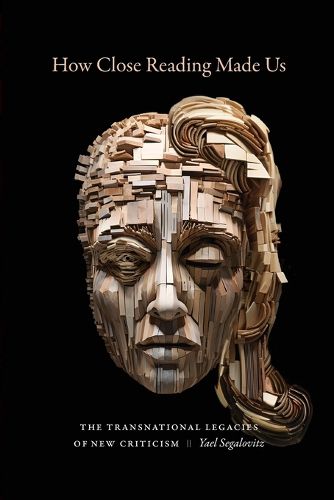Readings Newsletter
Become a Readings Member to make your shopping experience even easier.
Sign in or sign up for free!
You’re not far away from qualifying for FREE standard shipping within Australia
You’ve qualified for FREE standard shipping within Australia
The cart is loading…






Shows how the method of close reading traveled from the United States to Brazil and Israel, revealing its profound impact on global modernisms and reframing the lasting significance of New Criticism.
Does reading shape who we are? What happens to the relationship between reading and subject-formation as methods of interpretation travel globally? Yael Segalovitz probes these questions by tracing the transnational journey of the New Critical practice of close reading from the United States to Brazil and Israel in the mid-twentieth century. Challenging the traditional view of New Criticism as a purely aesthetic project, Segalovitz illustrates its underlying pedagogical objective: to cultivate close readers capable of momentarily suspending subjectivity through focused attention. How Close Reading Made Us shows that close reading, as a technique of the self, exerted a far-reaching influence on international modernist literary production, impacting writers such as Clarice Lispector, Yehuda Amichai, William Faulkner, Joao Guimaraes Rosa, and A. B. Yehoshua. To appreciate close reading's enduring vitality in literary studies and effectively adapt this method to the present, Segalovitz argues, we must comprehend its many legacies beyond the confines of the Anglophone tradition.
$9.00 standard shipping within Australia
FREE standard shipping within Australia for orders over $100.00
Express & International shipping calculated at checkout
Stock availability can be subject to change without notice. We recommend calling the shop or contacting our online team to check availability of low stock items. Please see our Shopping Online page for more details.
Shows how the method of close reading traveled from the United States to Brazil and Israel, revealing its profound impact on global modernisms and reframing the lasting significance of New Criticism.
Does reading shape who we are? What happens to the relationship between reading and subject-formation as methods of interpretation travel globally? Yael Segalovitz probes these questions by tracing the transnational journey of the New Critical practice of close reading from the United States to Brazil and Israel in the mid-twentieth century. Challenging the traditional view of New Criticism as a purely aesthetic project, Segalovitz illustrates its underlying pedagogical objective: to cultivate close readers capable of momentarily suspending subjectivity through focused attention. How Close Reading Made Us shows that close reading, as a technique of the self, exerted a far-reaching influence on international modernist literary production, impacting writers such as Clarice Lispector, Yehuda Amichai, William Faulkner, Joao Guimaraes Rosa, and A. B. Yehoshua. To appreciate close reading's enduring vitality in literary studies and effectively adapt this method to the present, Segalovitz argues, we must comprehend its many legacies beyond the confines of the Anglophone tradition.